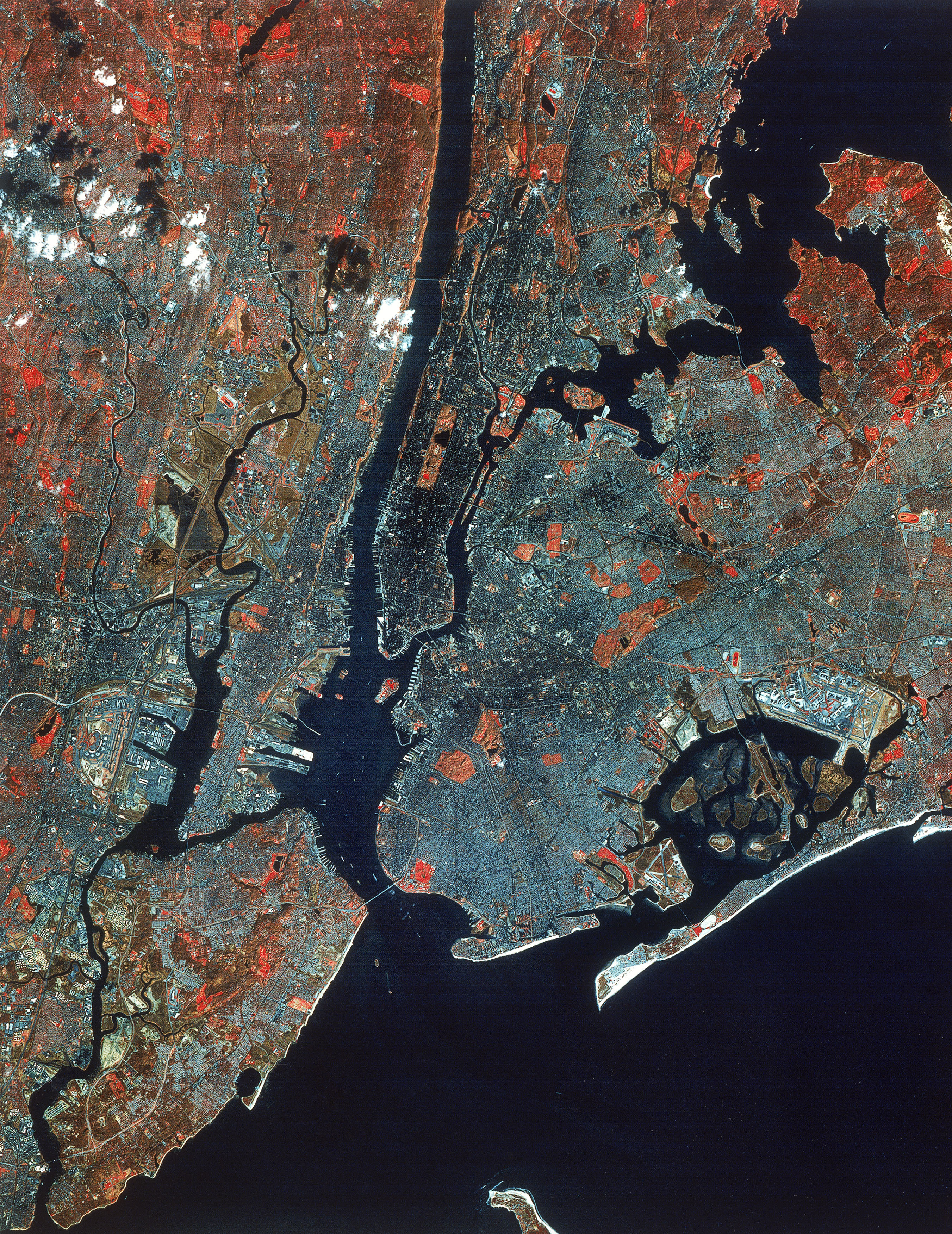Why 2005 was a major turning point in the 21st century

- In Disorder: Hard Times in the 21st Century, author and professor of political economy Helen Thompson explores the historical context behind today’s geopolitical disorder.
- The year 2005 marked geopolitical turning points in the U.S., China, and Germany, among other nations.
- One significant geopolitical development of the mid-2000s was China’s increased efforts to pursue energy security in a world dominated by American naval power.
Excerpted from Disorder: Hard Times in the 21st Century, written by Helen Thompson and published by Oxford University Press.
The dramatic nature of political events in 2016 from the Brexit referendum to Donald Trump’s election encouraged much short-sighted political analysis. Each of these junctures marked a significant turning point, without which the present, geopolitical, economic, and democratic political world would be recognizably different. But they were part of stories that have been playing out over decades, and the disruptive fault lines from which they emerged were overt in their effects as early as the middle of the 2000s.
In several respects, it was 2005 that was the year that the world in which we now live first took shape. In neither Washington nor Beijing did the US–China economic relationship appear as a simple political given. By 2005, as for the last time American carbon emissions out-stripped China’s, both Democratic and Republicans were already charging that Beijing’s trade and currency practices cost American manufacturing jobs. Protectionist pressure in Congress forced China formally to reconfigure its exchange rate policy. The Chinese leadership might have still judged the cross-Pacific relationship a net asset, but it was also already entertaining what would later become Xi Jinping’s more conspicuous Eurasian ambitions. If energy security in a world militarily dominated by American naval power has been the primary logic of Xi’s Belt and Road project, it was the second Iraq War that first focused minds in Beijing on China’s vulnerability in the Strait of Malacca. Having persuaded Russia to build an Asian oil pipeline in the same month that George Bush Jr prematurely declared the Iraq War over, China, two years later, held its first ever joint military exercises with Russia.
In the Middle East, the American attempt to impose a new order was in disarray, yet there was no path away from the region that any American president was likely to take. In 2005, the Sunni insurgency in Iraq accelerated, ending Bush’s plan to withdraw from the country and ensuring that the 2008 American presidential election would become the first of a series focused in significant part on the United States ‘forever wars’. This American failure in Iraq was one of the reasons that crude oil production stagnated in 2005, just at a moment when China’s demand for oil was accelerating. As Mervyn King warned when, that year, he pronounced the NICE era to be over, the ensuing oil price shock led to serious economic trouble. It also represented another geopolitical boon for Russia.
Meanwhile, in Europe, the world made by the Cold War’s end, German reunification, and the run of EU treaties from Maastricht had begun to unravel. It was in 2005 that the Dutch and French electorates voted against ratifying the EU Constitutional Treaty. Just to ask what would have happened if French voters had narrowly voted ‘yes’ in 2005 and Tony Blair had lost the referendum he had promised to hold shows how David Cameron’s decision-making, far from being an aberrant beginning, was the end of a story about weakening British democratic consent to the EU. Would there have been a replay of the Lisbon story in France with all the consequences that has had for the French party system? Would the EU have been stuck with the Nice Treaty, as the German and French governments accepted that consent issues might play out differently in a member state without euro-denominated debt? Or had Britain voted no in that hypothetical referendum in 2005 would that lost referendum have become a problem solely for the British government—just as acting as an employer of last resort to a monetary union to which it did not belong would later become—and played out to an earlier Brexit?
By 2005, Germany had reached several turning points. Economically, the re-emergence of a long-term preference for export-led growth and a large trade surplus left the Eurozone structurally divided, with the deficit states stripped of the safeguard of devaluation the ERM had once provided. Democratically, the 2005 German election began the era of grand coalition politics: between 1949 and 2004, a grand coalition had governed in Germany for less than three years; after the 2005 general election, a grand coalition had, by the start of 2021, governed Germany for all but four years. Geopolitically, a reunified Germany was beginning to reshape Europe’s energy geography. In 2005, Gerhard Schroeder’s government signed the agreement with Russia to construct the first Nord Stream pipeline, threatening Ukraine’s future as an energy transit state for Europe and diminishing Turkey’s utility as one. In the same year, Viktor Yushchenko became president of Ukraine and set about trying to achieve EU and NATO membership while Turkey began EU accession talks.
As these plates spun, the financial markets appeared detached from the emerging geopolitical and economic risks. Monetary tightening might have ended NICE, but it would have next-to-no short-term effect on credit conditions for financial corporations. The Eurodollar markets had become their own world, detached not, since they offered various opportunities to politicians, from politics, but from the ability of central bankers to manage an economic cycle and disincentivize excessive risk taking. Only on 9 August 2007 did the mechanisms of the entire complex funding system on which banks depended dramatically break down. From that day, the international monetary and financial system ceased to function without systematic support from the American central bank.
That so many of the causes of the disruptions of the 2010s were in place before the 2007–8 crash reflects the fact that so many of their deeper origins lie in the 1970s. That was the decade when American oil self-sufficiency ended, the oil price shocks and the age of fiat money began, a revolutionary regime seized power on the eastern side of the Persian Gulf, and Germany became decisively dependent on Soviet energy. It was the decade in which Deng Xiaoping turned China towards international trading markets. In the United States, it was in the 1970s that the end of conscription marked a symbolic end of one form of American nationhood, as well as revealing how politically difficult it was for the world’s dominant power to win land wars in Eurasia. In Europe, it was in the 1970s that the first attempt at monetary cooperation was undone by German economic strength, that the Italian First Republic started to rack up the debt that now so weighs down the Second Republic, and that national referendums first became the means used to legitimate the EU as a constitutionalized order. It was also in the 1970s that Eurodollar markets began to drive large-scale dollar credit.
That the latter parts of the 1980s and the 1990s were in good part intermissions from the intensity of these geopolitical and economic problems was largely the function of an energy interlude. Low oil prices, aided by the last years of China’s energy self-sufficiency, yielded low inflation and reasonably high growth. Soviet and then Russian weakness, as well as Washington’s ability first to use Iraq to contain Iran and then air power to police Iraq, allowed the United States to exercise power in the Middle East while fighting only one brief land war to free Kuwait. Separately, relative German economic weakness in the late 1990s and early 2000s meant that the euro’s early years were fairly conflict-free.
Of course, these largely benign conditions did not eliminate the disruptive capacity of some of the forces that began to move before the 1980s. The immediate turbulence generated by the Maastricht Treaty and the 1992–93 ERM crises bequeathed systemic problems: at the turn of the millennium, the EU was a multi-currency union that contained a Eurozone larger than Germany had ever intended with an offshore financial centre located in the wider Union. Quite clearly, the EU also had a long-term predicament centered around the relationship between Union-level treaties and national elections. In the United States, the fact that the 1992 presidential election was won on the lowest percentage of the popular vote since 1912 and the prolonged attempt by congressional Republicans to remove Bill Clinton from office by impeachment were early indications of the path the American republic was on towards weak losers’ consent.
By 2005, the interlude had passed.





